Question
For a particular cross-country skier, each point in the scatterplot gives the skier’s heart rate, in beats per minute (bpm), and the skier’s oxygen uptake, in liters per minute (L/min), as measured at various points on a cross-country ski course. A line of best fit is also shown.
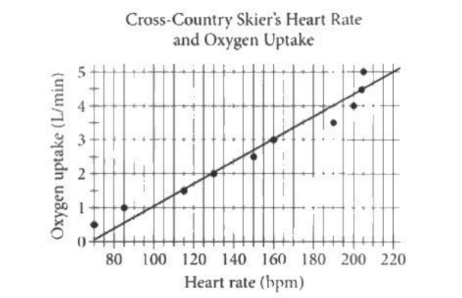
When the skier’s heart rate was 85 bpm, which of the following is closest to the difference, in L/min, between the skier’s actual oxygen uptake and the oxygen uptake predicted by the line of best fit shown?
- 0.5
- 1.0
- 2.5
- 5.0
Answer/Explanation
Ans: A
Question
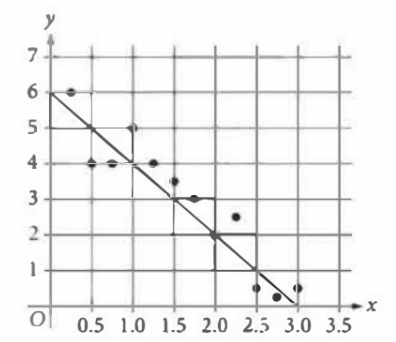
The scatterplot shows 12 values from a data set. A line of best fit for the data is also shown. Which of the following is the best interpretation of the \(y\)-coordinate of the \(y\)-intercept of the line of best fit?
- For the value \(x\) =6, the line of best fit predicts the corresponding \(y\)-value to be approximately 0.
- For the value \(y\) =0, the line of best fit predicts the corresponding \(x\)-value to be approximately 3.
- For the value \(x\) = 0 , the line of best fit predicts the corresponding \(y\)-value to be approximately 6.
- For the value \(y\) = 3 , the line of best fit predicts the corresponding \(x\)-value to be approximately 0.
Answer/Explanation
Ans: C
Question
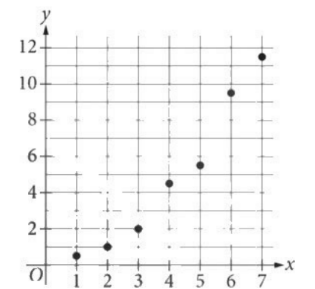
Which equation is the most appropriate quadratic model for the data shown in the scatterplot?
- \(y\)=4\(x\)2
- \(y\)=2\(x\)2
- \(y\)=(1/2)\(x\)2
- \(y\)=(1/4)\(x\)2
Answer/Explanation
Ans: D
Question
The scatterplot shows the relationship between two variables, \(x\) and \(y\). A line of best fit is also shown.
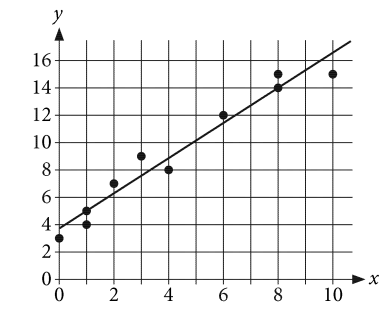
What is an equation of the line of best fit?
- \(y\)=3.7+1.3\(x\)
- \(y\)=1.3+3.7\(x\)
- \(y\)=3.7-1.3\(x\)
- \(y\)=1.3-3.7\(x\)
Answer/Explanation
Ans: A
Question
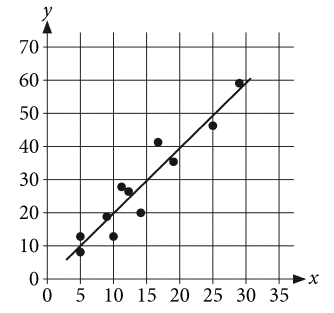
The scatterplot shows a data set of 11 points and a line of best fit for the data. For how many data points is the \(y\)-value predicted by the line of best fit greater than the actual \(y\)-value?
- Five
- Six
- Seven
- Eight
Answer/Explanation
Ans: A
Question
. 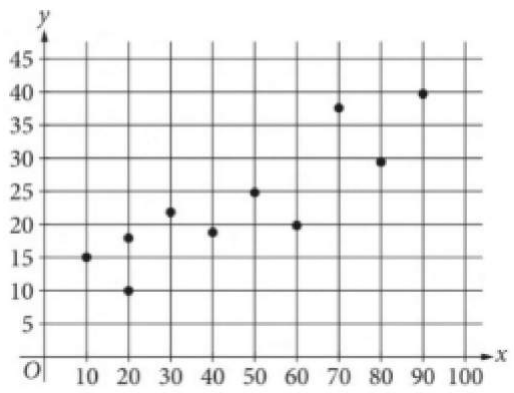
The scatterplot shows 10 values from a data set. Which of the following equations is the most appropriate linear model for the data shown?
- \(y=9+\frac{3}{10}x\)
- \(y=9-\frac{3}{10}x\)
- \(y=\frac{6}{5}x\)
- \(y=\frac{3}{8}x\)
Answer/Explanation
Ans: A
Question
The scatterplot shows the average price per square foot of a house in the United States each year for several years. A line of best fit for the data is also shown.
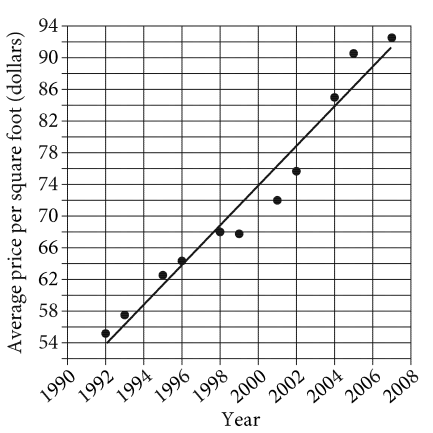
The line of best fit predicted that the average price per square foot in 2001 would be \($\)76. What is the difference between the predicted value and the actual average price per square foot in 2001?
- \($\)0
- \($\)2
- \($\)4
- \($\)6
Answer/Explanation
Ans: C
